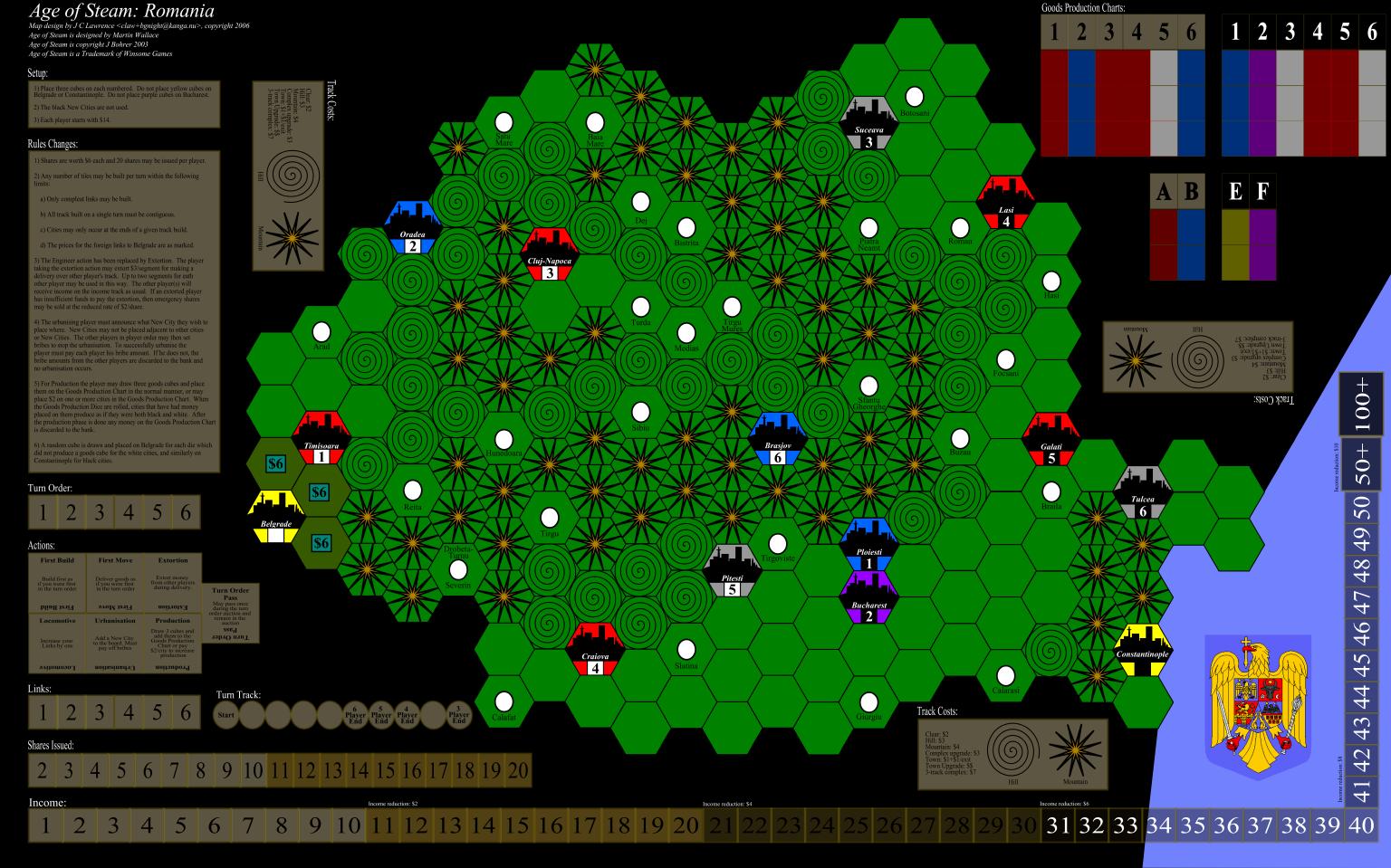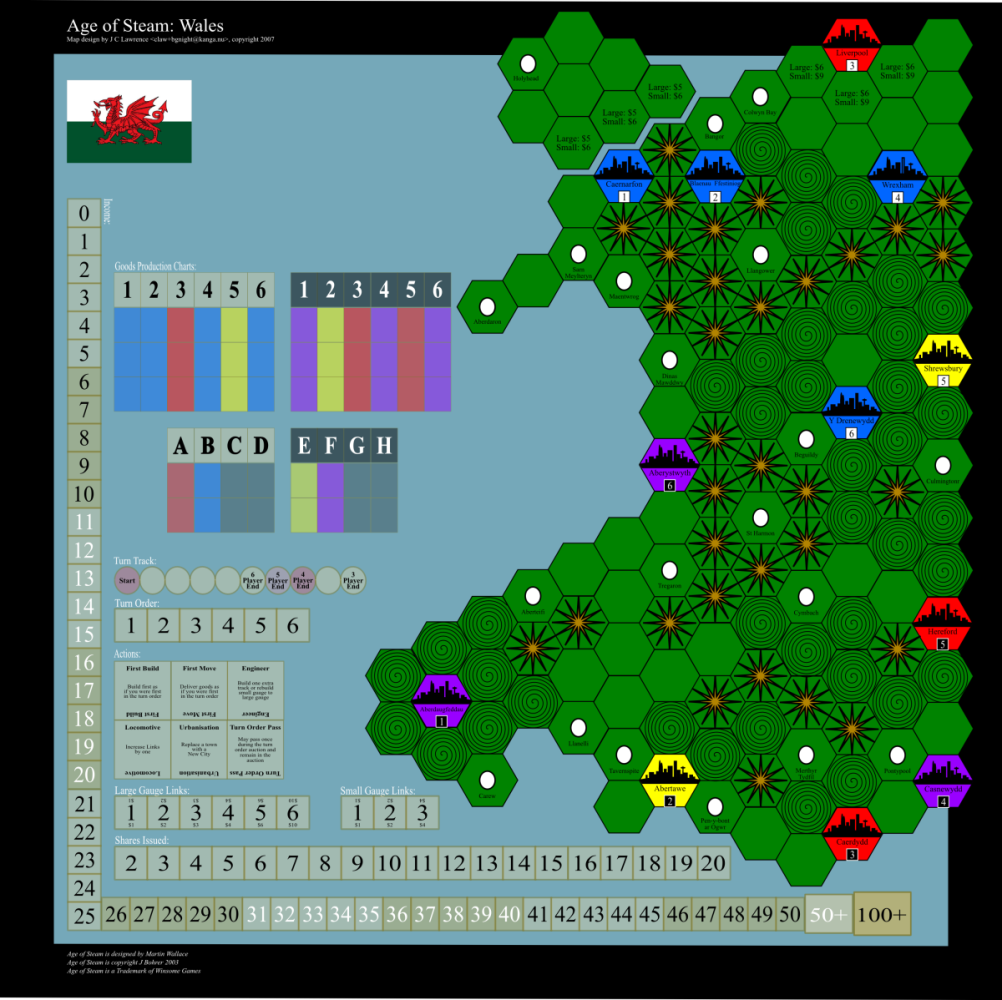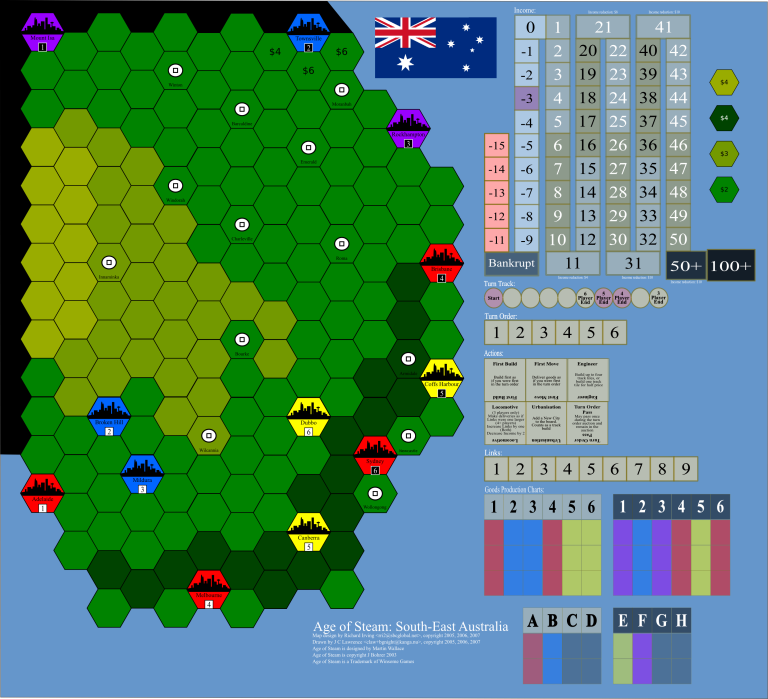Imposing the map
Some of this early attempt exploits a prior attempt at an AoS:Romania map:

That prior version of the map however was far too large for publication and had crippling rules problems. However it fed ideas into this new attempt. A basic hex grid that will fit on a 24”x18” map sheet superimposed on a map of Romania:
(sorry, image lost)
Now to tag in some potential cities (tan) and possible town locations (blue). The locations are primarily selected on the basis of population census data for Romania and secondarily influenced on the basis of historical railway paths (some shown on the background map).
(sorry, image lost)
Until writing this entry I wasn’t aware of quite how much work and past experience went into getting to this point. For instance I’m going to have to be particularly careful with city colour assignments. specifically I’m going to have to put multiples of the same colour in the east near Constantinople. Additionally whatever colour I put in Belgrade will greatly affect the standard patterns of development through the towns North of Bucharest and West of Galati. No matter what I do, those towns will tend to be the lynchpin towns of the map, just like AoS: Wales is similarly controlled by the fate of the towns of Dinas Mawddy, St Harmon, and Culmington.

As a result, Urbanisation will be immensely powerful (and possibly the most desired action in the game). AoS:South East Australia certainly has this pattern and is similarly based on a network-growth-through-urbanisation pattern for most of the late game.

The next step will be to sketch in terrain and city colours and towns. A few hours over that should show that the map is viable as an Age of Steam basis. After that it is simply a case of writing the first pass rules. It is at that point that the real work begins:
- Write a spreadsheet which simulates the game as played by the new rules
- Play somewhere between fifty and a few hundred games on the spreadsheet and see what I can make work or break
- Tweak the rules
- Repeat from #1
During this process the map probably won’t change much at all (asides from the odd city colour assignment). Only the rules will change.
NB Larger images and related discussion of the above finished Age of Steam maps can be found on BoardGameGeek: